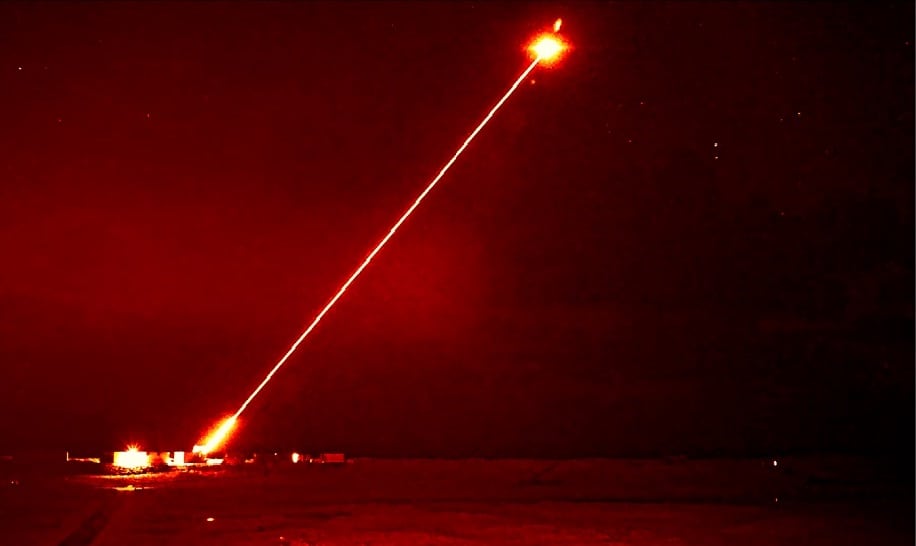WASHINGTON — The U.S. Department of Defense must clearly commit to directed-energy weapons, or DEW, and shore up domestic sources of requisite materials to make them if it wants to deploy the futuristic arms en masse, industry advocates say.
The Pentagon has in the past “wavered in its commitment to fielding” high-energy laser and high-power microwave systems at significant scale, ultimately hurting its suppliers and their logistical choices, the Emerging Technologies Institute and the National Defense Industrial Association said in a study published Jan. 23.
That status quo spells trouble for a type of armament that defense officials have described as a game-changer. Laser and microwave systems, known as HEL and HPM, are thought to have a critical role to play in countering overhead threats such as drones and missiles.
“The U.S. does not have the luxury of time with its DEW development,” they said in the report, which was derived from research and interviews with Lockheed Martin, L3Harris Technologies and Epirus, among other sources. “Adversaries have made progress with their own directed-energy programs, and this progress shows no signs of abating.”
The Defense Department has for decades poured money into directed-energy weapons, an average $1 billion annually in the past three years, according to the Government Accountability Office, a federal watchdog.
At least 31 directed-energy initiatives are underway across the U.S. military. They include Lockheed’s High Energy Laser with Integrated Optical-dazzler and Surveillance, or HELIOS, installed aboard the Navy destroyer Preble in 2022, and Epirus’ Leonidas, delivered to the Army in 2023 in furtherance of its Indirect Fire Protection Capability.
Bringing such systems into mass production has proven difficult. Aside from their technological complexity, laser- and microwave-based weapons require specialty materials, such as germanium and gallium, and expensive precision components.
RELATED

“Current HEL and HPM supply chains face multiple vulnerabilities, including foreign dependency, sole source dependencies, and capacity constraints,” the report says, adding that a lack of clear and consistent demand “negatively impacts the manufacturing base by causing longer lead times, increasing costs, and creating hesitancy by industry to invest in manufacturing capabilities.”
Lasers and microwaves each have their own strengths and weaknesses as weapons. Defense officials and outside analysts insist they will one day play a key role in what’s known as layered defense: having multiple tools or countermeasures ready to thwart different threats in different situations.
Clashes with Yemen-based Houthi rebels in the Red Sea and Russia’s continued invasion of Ukraine are examples of potential directed-energy applications in the here and now.
“Today, the U.S. is in an era of great power competition and faces an increasingly contested security environment, with wars in the Middle East and Europe, and confrontations in the South and East China Seas,” the study states. DEW, it adds, “are poised to play an increasingly vital role in countering the threats posed by an increasingly belligerent China, Russia and Iran.”
Colin Demarest was a reporter at C4ISRNET, where he covered military networks, cyber and IT. Colin had previously covered the Department of Energy and its National Nuclear Security Administration — namely Cold War cleanup and nuclear weapons development — for a daily newspaper in South Carolina. Colin is also an award-winning photographer.








